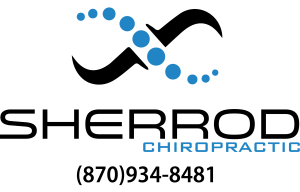Sacroiliac Joint Dysfunction
Pain in and around the sacroiliac joint is one of the most common causes of low-back pain. With approximately 80% of the population suffering from low-back pain at some point in their lives, the sacroiliac joint dysfunction (SJD) most likely represents about 15-25% of those cases. SJD is a broad term often applied to the pain in the sacroiliac joint region. While SJD can be painful and debilitating, it is rarely life-threatening, nor does it typically require invasive types of treatment such as surgery.
What are the sacroiliac joints?
The sacroiliac joints are the largest joints in the spine. If you look at your lower back in a mirror, you will identify these joints as two small dimples on each side of your lower back at the belt line. The joints are found at the base of the spine, between the ilium (the large, flat pelvic bone) and the sacrum (the upside-down triangular bone at the base of the spine). Interestingly, during pregnancy, these ligaments relax to allow the passage of the baby through the birth canal.
Rich with nerves and supported by large, broad ligaments, the long, thin, oblique sacroiliac joints provide stability of the pelvis, absorb shock, and allow just enough motion—a combination of gliding, rotation, and tilting to only a few degrees—to help relieve stress on the spine and hips.
What are the symptoms and causes of sacroiliac joint dysfunction (SJD)?
Symptoms of SJD include low-back pain, typically at the belt line, and pain radiating into the buttock or thigh. These symptoms can often mimic those from other causes of low-back pain, such as disc herniations and disease of the facet joints.
SJD is most common in adults. Most often, SJD is caused by trauma, especially rotation of the joint while the lower back is loaded, as might happen when lifting or participating in some vigorous activity. It is thought that such trauma causes tears, most often small ones, in the ligaments surrounding the joint, resulting in pain and dysfunction. The risk of SJD dysfunction is also thought to increase with true and apparent leg-length inequality, abnormalities in gait, and prolonged exercise. While more serious conditions such as fracture or dislocation, infection, and inflammatory arthritis can cause pain in the sacroiliac joint, minor trauma is a much more common cause.
In pregnant women, SJD is likely secondary to the hormone- induced relaxation of the pelvic ligaments during the third trimester. Weight gain and increased curvature of the lumbar spine are also likely to contribute to the pain in these women.
How is SJD evaluated?
Because SJD pain resembles other types of low-back pain, it is often difficult to isolate it as the actual cause of pain and disability. While no one test is sufficient to diagnose SJD dysfunction, the most commonly used diagnostic procedures are physical examination and anesthetic blocks of the sacroiliac joint. Physical examination procedures, such as orthopedic tests or chiropractic static and motion palpation, involve stressing the joint in various body positions and movements. During anesthetic blocks, a procedure whose validity for SJD diagnosis requires further research, the anesthetic solution often creeps outside the sacroiliac joint and may relieve pain from other structures, making correct diagnosis challenging. Diagnostic imaging procedures, such as x-ray or MRI, aren’t very helpful in evaluating SJD.
How is SJD treated?
Because it is often difficult to isolate the SJD as the source of pain, an appropriate management strategy is hard to implement. It is important for you to choose a doctor who is well-versed in the biomechanics and functions of the sacroiliac joint.
Once the doctor has determined that SJD is the problem, there are myriad therapies available for treatment. Chiropractic manipulation and mobilization of the sacroiliac joint have been demonstrated to be beneficial. In addition, therapeutic exercise can be helpful. These exercise programs should focus on strengthening the core stabilizer muscles of the spine and trunk and also on maintaining the mobility of the sacroiliac joints.
For patients with a leg-length inequality, some type of shoe insert may help manage the problem. These insets can help properly distribute the weight borne by your lower back and sacroiliac joints. If the biomechanics of your gait are abnormal, your doctor may prescribe “gait training.” The doctor will watch you walk and re-train you in proper gait mechanics.
Your doctor may also prescribe a pelvic belt to help stabilize the joints as you perform your daily activities. These belts are thought to reduce the excess rotation that sometimes occurs with SJD.
In some rare cases, more invasive forms of therapy are necessary. These include anesthetic/corticosteroid injections into the sacroiliac joints and/or radiofrequency denervation—a technique in which high-frequency radio waves are used to destroy the nerves in the area of the sacroiliac joints, thereby preventing pain. In severe sacroiliac joint injuries, such as fractures and dislocations, surgery is necessary.




